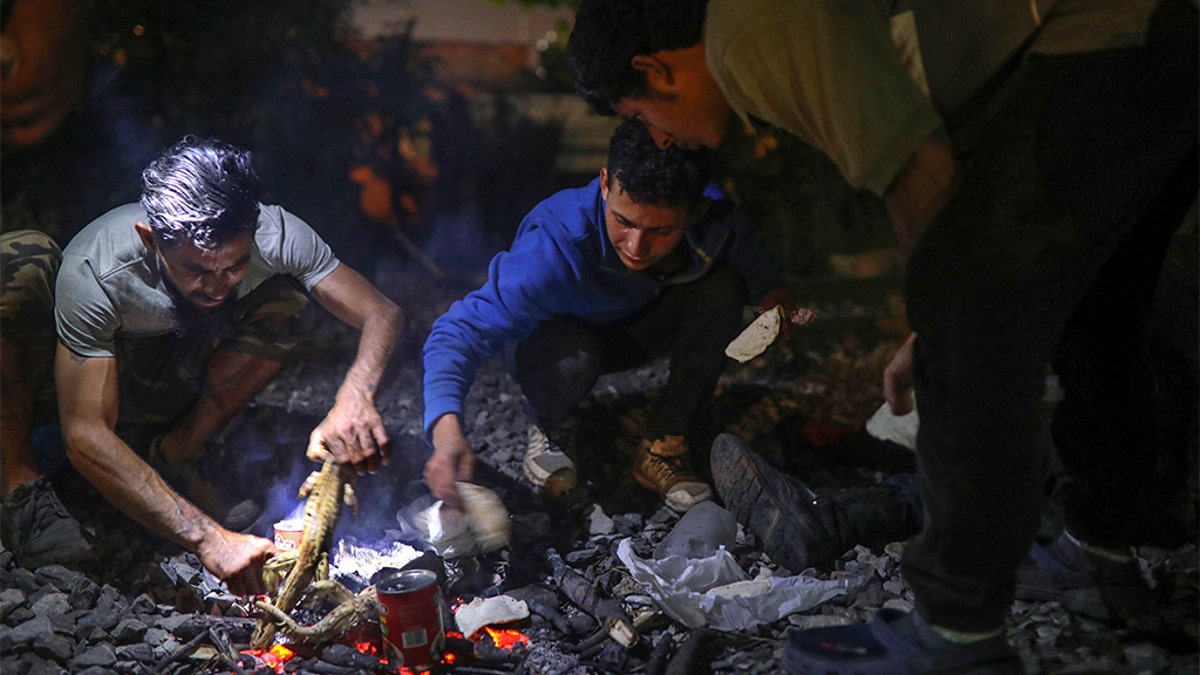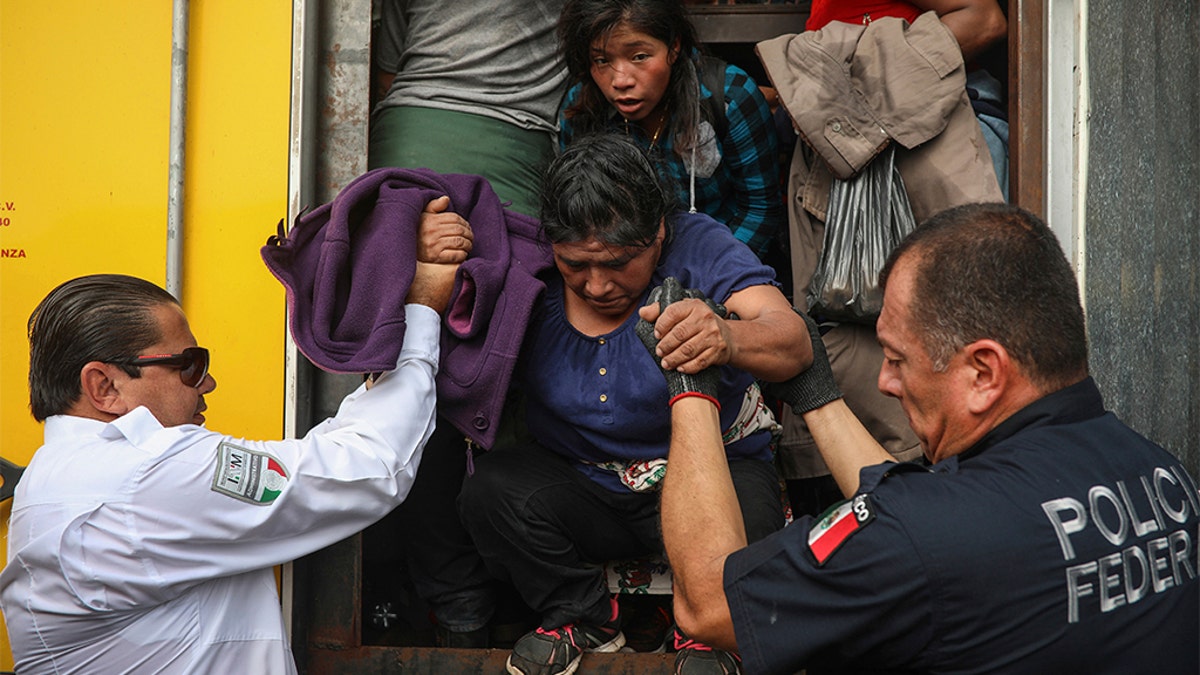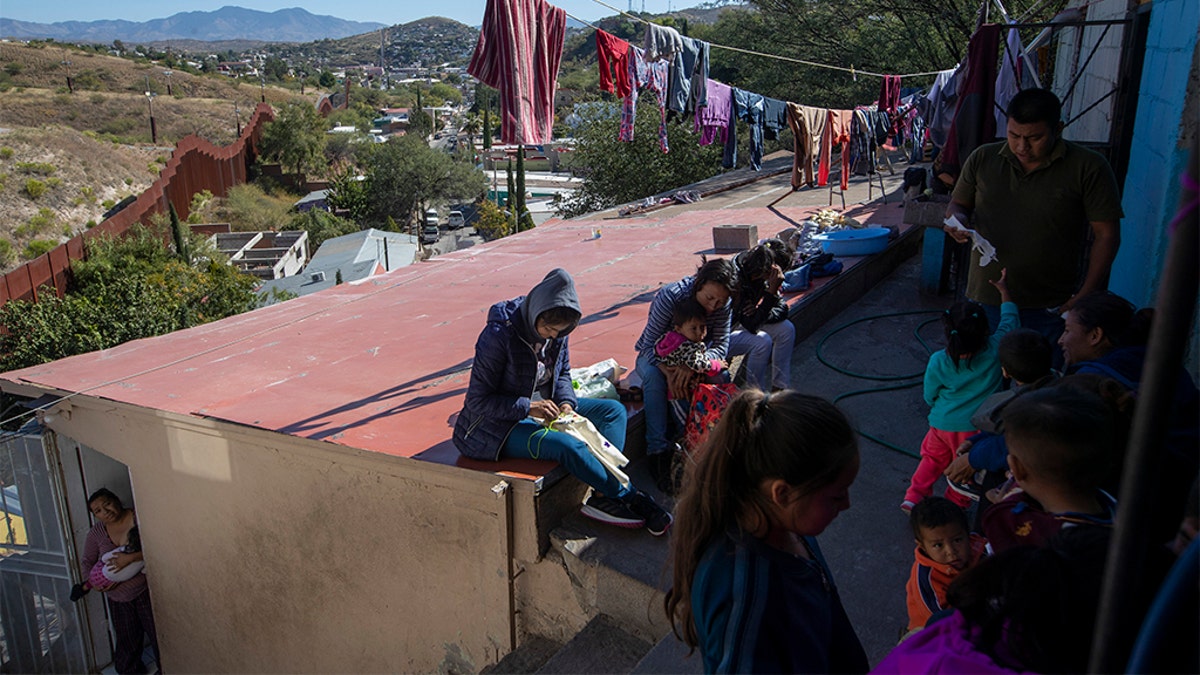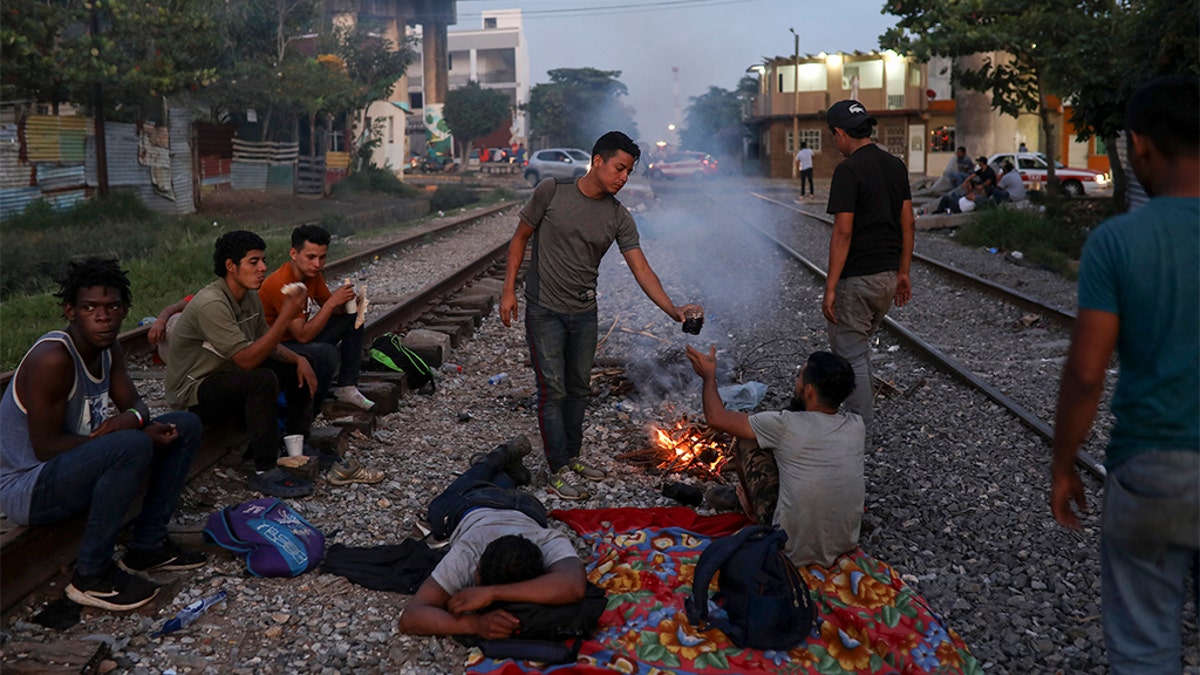Trump defends plan to allow indefinite detention of migrant families
President Trump says efforts to scrap the Flores agreement are all about deterrence and safety; Kevin Corke reports from the White House.
Despite the hardening of U.S. and Mexican immigration policies, the shadowy enterprise of smuggling migrants — that governments on both sides of the border have promised to crack down on — is big business.
The Associated Press reported that the smuggling business has learned to adapt and has thrived.
The money keeps flowing.

In this Nov. 21, 2019 photo, a Central American migrant climbs on a railroad car during his journey north, in Coatzacoalcos, Veracruz state, Mexico. (AP Photo/Felix Marquez)
The massive return of asylum seekers to Mexico — more than 55,000 this year — has meant more business opportunities for smugglers.
It’s a multibillion-dollar business that the United Nations Office on Drugs and Crime estimates involves $4 billion annually. The Mexican government has calculated it could be as high as $6 billion.
In a year of dramatic policy changes on both sides of the border, smuggling networks have adjusted: higher prices, some new workarounds, attractive “package deals” for every budget, as well as tried-and-true smuggling techniques that include well-trodden routes and generous bribes.

In this Nov. 21, 2019 photo, Central American migrants cook iguanas that they hunted with a slingshot next to the railroad tracks that they hope will take them north, in Coatzacoalcos, Veracruz state, Mexico. (AP Photo/Felix Marquez)
The impact of the Trump administration to limit legal and illegal immigration has been swift: migrants were pushed “into mafia hands,” deciding that paying a smuggler was the only way to make it across the border, said Guillermo Valdés, a former Mexican intelligence director. Mexico’s immigration agency says it has identified 18 such smuggling networks operating in nine Mexican cities.
And the price of the journey has grown, often surpassing $10,000 for those from Central America. But there are enticements, like the “package” deal: $3,000 to $6,000 to deliver an adult and a child across the border in hopes they’ll be picked up by U.S. Border Patrol and released into the U.S. to await their asylum cases.

In this Nov. 26, 2019 photo, a federal police officer assigned to the National Guard and a migration agent help a woman off the cargo hold of a truck packed with migrants being smuggled, at an immigration checkpoint where the truck was stopped in Medellín de Bravo, Veracruz state, Mexico. The final tally of people being smuggled in the truck was 74. (AP Photo/Felix Marquez)
The flow of migrants has begun to fall, however.
Total apprehensions and those deemed inadmissible at ports of entry at the southern border reached 977,509 migrants from October 2018 until the end of September, the highest number since 2007 — and a more than 87 percent increase since the same period a year earlier.
In November, the most recent figures available, detentions at the U.S.-Mexico border were down nearly 5 percent from the previous month and almost 70 percent below the year’s peak in May, according to U.S. Customs and Border Protection data.

In this Oct. 31, 2019 photo, migrants rest at "La Roca," or The Rock shelter in Nogales, Sonora state, Mexico. The shelter sits next to the border fence, top left, that separates Mexico from the U.S. (AP Photo/Moises Castillo)
On the Texas border, Rio Grande towns thrive on illegal cross-border traffic. Stash houses have proliferated in a town of 20,000 because “a lot of people don’t have work and so they’ve rented their houses,” said one resident, who declined to give her name for safety reasons.
“Everyone has gotten in on the business and it’s generating a lot of money,” she said.

In this Nov. 26, 2019 photo, migrants are held in a van of the National Migration Institute after they were found in the cargo hold of a truck where dozens of Central American migrants were being smuggled, at an immigration checkpoint in Medellin de Bravo, Veracruz state, Mexico. (AP Photo/Felix Marquez)
Manuel, a cartel money man, who asked to be identified only through a first name, explained that when a migrant can’t pay, “You take advantage of the other business” — smuggling drugs.
“If they don’t have money, you tell them, ‘This counts for this much,’ and they have to work,” he said.
CLICK HERE TO GET THE FOX NEWS APP

In this Nov. 21, 2019 photo, Central American migrants wait to catch a ride on a passing train in Coatzacoalcos, Veracruz state, Mexico. (AP Photo/Felix Marquez)
Even with Mexico claiming a crackdown on migrant smuggling, Manuel said he doesn’t feel more pursued by authorities than before. The risk, he said, is the same as always.
“You’re going to have more expenses, but nothing changes,” he said. “The border is a business for everybody.”
The Associated Press contributed to this report.






















